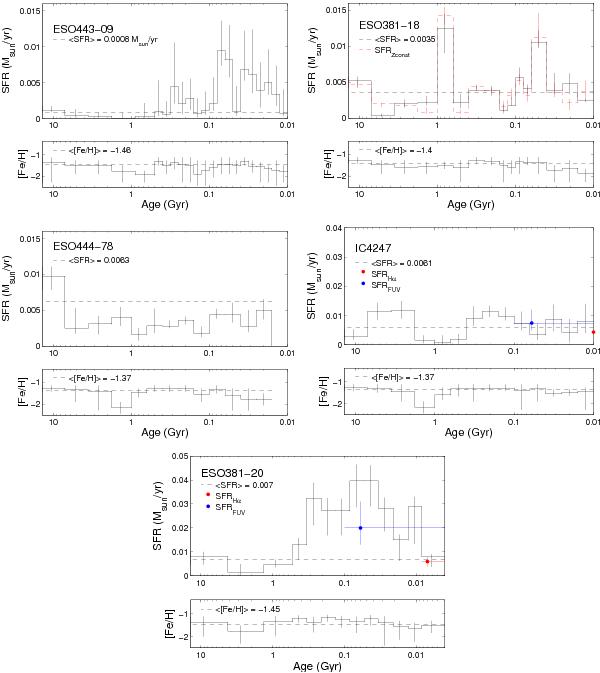Fig. 4

Upper panels. Star formation histories derived for the five studied galaxies (ESO443-09, ESO381-018, ESO444-78, IC 4247 and ESO381-20, ordered by increasing absolute magnitude). For each galaxy, the star formation rate as a function of time is plotted, with the oldest age being on the left side and the most recent age bin on the right edge of the (logarithmic) horizontal axis. Note that the size of the age bins is variable due to the different amount of information obtainable from each CMD for each stellar evolutionary stage. ESO381-20 is the only galaxy in this sample for which the SFR could be derived for ages younger than 10 Myr. Also note the different vertical axis scales. The black dashed line indicates the mean star formation rate over the whole galaxy’s lifetime. The red dashed line for ESO381-18 indicates the alternative star formation history solution obtained when restricting the metallicity range in the parameter space (see text for details). The red dots for IC 4247 and ESO381-20 report the current star formation rate derived from Hα observations described in the literature, while the blue dots indicate the recent star formation rate derived from the FUV (see text for references). Lower panels. Metallicity as a function of time, with the same axes convention as above. The black dashed line represents the mean metallicity over the galaxy’s lifetime. Note that the metallicity evolution is poorly constrained.
Current usage metrics show cumulative count of Article Views (full-text article views including HTML views, PDF and ePub downloads, according to the available data) and Abstracts Views on Vision4Press platform.
Data correspond to usage on the plateform after 2015. The current usage metrics is available 48-96 hours after online publication and is updated daily on week days.
Initial download of the metrics may take a while.







